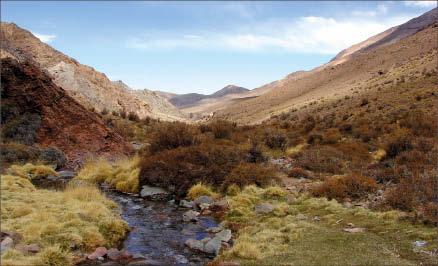The provincial government of Mendoza has failed to ratify an environmental impact declaration (EID) for Coro Mining‘s (COP-T) San Jorge copper-gold porphyry project in western Argentina, voting against allowing the company to build an open-pit mine there.
Shares of Coro plunged 54%, or 31¢, in 45 minutes of trading before closing at 26¢ on 289,000 shares traded. Concern the project would be rejected and a general pullback in the market had already brought Coro’s shares down to 60¢ in August from a 52-week high of $1.62 in February.
The rejection marks the latest and possibly last chapter in Coro’s long quest for environmental approval. Mendoza’s provincial government first passed legislation in mid-2007 banning certain “toxic chemicals” used in mining, in particular sulphuric acid. This meant Coro could not heap leach the San Jorge deposit’s oxidized cap, and led the company to challenge the law in court, reasoning it was unconstitutional.
Coro pushed ahead to develop a sulphide-only mine as an alternative, filing its environmental permitting application in late 2008 after completing a revamped preliminary economic assessment. The chemicals used to recover copper and gold from sulphide ore are still allowed in Mendoza.
After several pleasing stamps of approval, including ones from the National Technological University of Mendoza and the Interdisciplinary Commission for the Environmental Evaluation of Mining Projects, the company received an approved EID from the Mendoza government in February.
But the same law that bans certain toxic chemicals also requires the approved EID to be ratified by the provincial legislature, and it was this ratification that was denied in August.
Mine permitting in Mendoza is a delicate process even for the best of projects, mainly because of worries that mining could affect the province’s flourishing cattle ranching and winery industries. Protecting the water and soil quality in the area is of utmost importance, and last year the goverment made Coro conduct additional hydrological work to show that hazardous contaminants from the mine would not spill into the Mendoza river system.
Coro has argued the project is located within the Yalguaraz hydrological basin, which it states is not connected to the
adjacent Uspallata basin, which in turn flows into the large Mendoza River. A local environmental group, Oikos, later filed legal claims requesting the environmental approval process be suspended on grounds of “deliberate misinterpretation of documents,” prompting Coro to call the suit “frivolous” and a “last-ditch legal effort” to stall the project’s development.
The courts have rejected the first of Oikos’ claims, confirming that the process of approving the EID was legitimate.
A preliminary economic assessment for San Jorge completed in 2008 calculated the sulphide-only operation could produce 39,500 tonnes copper and 39,000 oz. gold each year for 16 years. Capital costs were estimated at US$277 million and the project carried an after-tax net present value of US$220 million, though based on copper and gold prices of US$2 per lb. and US$600 per oz.
The company says it will seek legal redress and compensation through the Argentinean and international courts as a result of the rejection.
In particular, it will continue to challenge the 2007 law barring sulphuric acid use in mining operations.
According to Coro, “the company anticipates that this lawsuit may be resolved by mid-2012, and in the event that the courts find that the law is indeed unconstitutional, the denial of legislative ratification of the company’s valid and approved environmental impact declaration may be deemed to be null and void.”
In the meantime, Coro will work on its four other base metals projects in Chile, mostly in earlier stages of exploration.


Be the first to comment on "Mendoza gov’t rejects permit for Coro’s San Jorge"